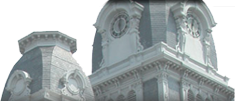Demolished building’s glory remembered
DAVE MOSIER/independent editor
Although it is a pile of rubble now, the Home Guards Temple Building was one of the city’s most luxurious structures when completed in 1906. While not as old as some downtown buildings that date to the late 1800s, its 114-year existence lasted far longer than the organization that built it.
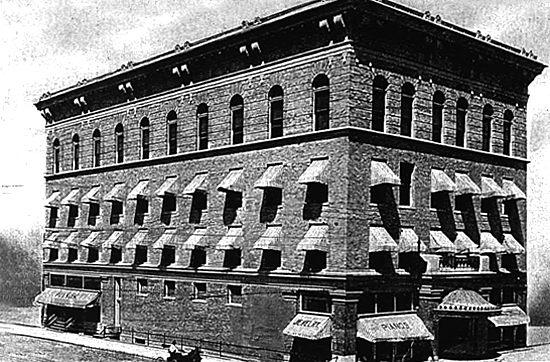
The Home Guards of America was the brainchild of Dr. George J. Eblen, a local physician who envisioned a fraternal organization created to provide life and accident insurance exclusively to its members. He founded the Home Guards of America with his brother-in-law, John W. Evans. Other founding members of the organization included Common Pleas Judge Hiram C. Glenn and local businessmen Hugh V. Olney, Henry G. Lehmann, and Captain J.B. Smith, a former city mayor.
Others who became associated with the organization included James W. Smith, a longtime business associate of George Marsh who was the Home Guards’ first general manager; local attorney Gaylord Saltzgaber; and banker and insurance executive John P. Reed Jr., who had married Stella Brumback and settled in Van Wert. The Reeds’ son, Richard, was an aviator who was killed in World War I. His siblings, Orville and Ellen, left a bequest on Richard’s behalf to pay for the 1990 renovation of, and addition to, Brumback Library.
In addition to being an insurance company, the Home Guards of America was also a fraternal organization, similar to the Elks, Eagles, Fraternal Order of Moose, and conducted a number of meetings and social functions, such as conventions, banquets, and other activities.
The organization, founded in 1899, quickly became successful and, by 1905, had nearly 9,000 members in cities all over Ohio, as well as in Pennsylvania, Kentucky, and Michigan.
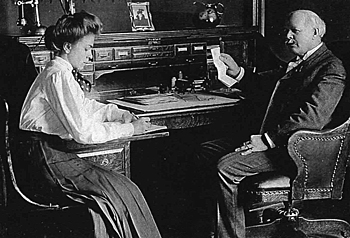
With its membership outgrowing the Red Men Hall, where the organization held meetings and social functions beginning in 1899, the executive committee decided to build a new building that would be the envy of the city and other Ohio fraternal organizations.
The cornerstone was laid on the building August 9, 1905, and the building was officially dedicated June 1, 1906. Local contractors Zook & Wilson were the builders of the structure, which cost $85,000 when completed (equivalent to more than $2.5 million today).
The four-story building included a music store, the Home Guard Grocery, and several clothing shops in the basement area and first floor, as well as Saltzgaber’s law offices and law library, and two physicians’ offices. The business offices of the Home Guards of America were on the second floor.
The third floor featured the 2,574-square-foot Home Guards lodge room, which also included a 2,106-square-foot gallery. The room was illuminated by 115 lights.
Also on the third floor were men’s and women’s reception rooms, a members’ reception room, marble-clad lavatories, a Schiller piano, as well as the meeting room and quarters for the Trewnav Club — a social group whose members included most of Van Wert’s community leaders. The club’s name is “Van Wert” spelled backwards, The Trewnav Club area included a 500-square-foot meeting room with a large fireplace, reception rooms, and other, smaller rooms that could be used for card parties and other social gatherings.
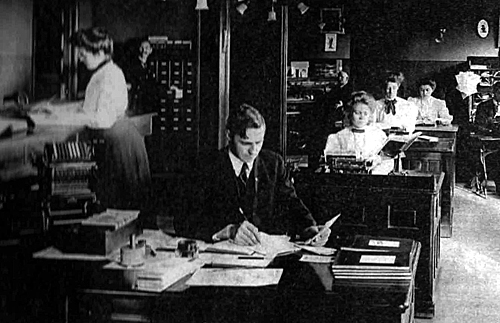
A landing between the third and fourth floors housed a billiards room, while the fourth floor included a 2,500-square-foot banquet hall, with a balcony and adjacent kitchen, the entrance to the lodge room gallery, and a coat-check room. The floors were connected by an elevator, as well as stairs, while there was a freight elevator that went to the banquet room.
A large motor was installed in the attic to operate the fans that provided ventilation to the lower floors of the building.
More than 400 Home Guards members and their friends attended the building’s dedication, while annual meetings were held there until 1915, when new state insurance regulations forced the Home Guards of America to merge with the American Insurance Union, another fraternal insurance organization. Following the merger, the Home Guards offices and employees were moved to the American Insurance Union Building (now the Leveque Tower, which is still a downtown landmark in Columbus). American Insurance Union later went bankrupt during the Great Depression and its assets were acquired by what is now Nationwide Insurance.
Back in Van Wert, the Home Guards Temple building was rented out to various entities for the next decade and a half before it was acquired in the early 1930s by the Van Wert Overall Manufacturing Company, a company that made bib overalls, and was utilized as the company’s business offices and manufacturing facility. The firm later diversified to manufacture work pants, shirts, and hats, and shortened its name to the Van Wert Manufacturing Company. A subsidiary, the Universal Uniform Company, embroidered names and logos on the work clothes.
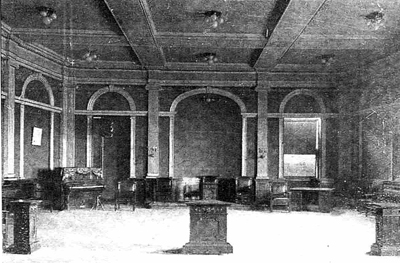
As a side note, in 1933, Van Wert Manufacturing/Universal Uniform was asked to create jackets for Fredericktown FFA band members who were performing at the national FFA convention held that year in St. Louis, Missouri. The jackets were a big hit with FFA members, and the company was hired to make embroidered FFA jackets until it filed bankruptcy in 1989. The company later reorganized as Universal Lettering and still makes FFA jackets in Van Wert, as well as other embroidered items, and, recently, face masks.
After the demise of Van Wert Manufacturing, the Home Guards Temple building remained unoccupied and neglected for nearly three decades, becoming more and more dilapidated until a partial collapse of the northwest portion of the building this fall created a safety hazard to the community.
The threat to public safety forced the building’s current owner, the Van Wert Area Land Reutilization Corporation (land bank) — which acquired it at auction in December 2019 — to have the building demolished, with financial assistance from grants and the Van Wert County Foundation.
It is a sad end for what was one of Van Wert’s grandest downtown buildings when constructed more than a century ago.
Editor’s note: The Van Wert independent is grateful to the late Helen Prill, a local historian, and The Brumback Library, for compiling and maintaining information used in this article.
POSTED: 12/21/20 at 3:58 am. FILED UNDER: News




